Vered Neta's Blog, page 10
May 14, 2023
Creating a Character’s Physicality
Crafting a character’s physicality is like adding the perfect seasoning to a delicious story stew. It’s all about creating vivid images and bringing your characters to life on the page or screen.
But hey, hold your horses! While physical descriptions are important, going overboard can actually harm your story. Especially in screenplays, where the possibility of getting your script produced often hinges on finding a big-name star to attach to it. You don’t want to limit your characters just to fit the current “A-list” actors and actresses.
Picture this: you’re reading a novel or watching a movie, and the characters leap off the page or screen with their distinct appearances, movements, and overall presence. That’s the magic of well-crafted physicality.
Here is a guide of some Do’s and Don’ts on how to create a character’s physicality that will make your story shine like a supernova! So, buckle up as we explore the Do’s and Don’ts of character physicality.
Here are 5 DOs in Creating a Character’s Physicality.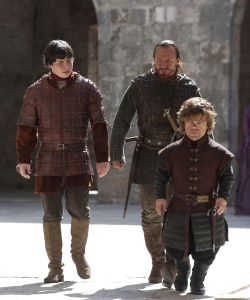 #1 – DO Make Physicality Reflect Personality.
#1 – DO Make Physicality Reflect Personality.
Think of your character’s physicality as a visual representation of who they are on the inside. If your character is bold and courageous, their physical attributes should reflect that.
In the epic realm of “Game of Thrones,” where dragons soar and battles rage, we encounter the unforgettable character Tyrion Lannister, played by the incomparable Peter Dinklage. Tyrion’s physicality is like a secret weapon, adding layers of complexity to his already fascinating persona.
Standing shorter than most in the realm, Tyrion’s stature might catch your eye, but it’s his razor-sharp wit and cunning intellect that truly leave a lasting impression. His physical appearance becomes a badge of honour, a symbol of his resilience and ability to outsmart his adversaries at every turn.
As we journey alongside Tyrion, we learn that his physicality is not a limitation but a source of strength. He uses his quick mind and silver tongue to outmaneuver opponents twice his size. Through clever banter and strategic maneuvering, he proves that true power resides in the depths of one’s character, not in their outward appearance.
“Game of Thrones” teaches us a valuable lesson: never judge a book by its cover, or a character by their physicality. Tyrion Lannister’s example reminds us that the qualities that truly define us lie within. It’s the wit, intelligence, and resilience that shape our destinies, not the shape or size of our bodies.
So, next time you’re creating a character, think about how their physicality can reflect their personality in a unique and meaningful way, just like Tyrion Lannister. Let their outer appearance become a canvas to showcase the vibrant and captivating traits that make them who they are.

#2 – DO Use Physicality to Convey Backstory.
Carefully consider how a character’s physicality can reflect their backstory and experiences. In the critically acclaimed film “Black Swan,” directed by Darren Aronofsky, the physicality of the protagonist, Nina Sayers, powerfully communicates her backstory and internal struggles. Played by Natalie Portman, Nina is a ballerina striving for perfection in the demanding world of professional ballet.
From the moment we meet Nina, her physicality tells a tale of dedication and repression. She maintains a delicate and fragile appearance, with her slender frame and elegant movements. Her tightly pulled-back hair, impeccable posture, and meticulous attention to detail all reflect her disciplined upbringing and relentless pursuit of excellence.
As the story unfolds, we begin to understand the deeper layers of Nina’s physicality. The strain of her relentless training manifests in her tense muscles, revealing the physical toll ballet has taken on her body. Furthermore, her physicality reflects the psychological weight she carries due to her perfectionist tendencies and the pressure she feels from her overbearing mother.
Through subtle changes in her physicality, such as increased tension, bruises, and even self-inflicted harm, the film skillfully conveys Nina’s descent into psychological turmoil and obsession. Her physicality becomes a window into her internal world, showcasing the sacrifices she makes and the toll her passion takes on her mental and physical well-being.
“Black Swan” masterfully uses physicality as a storytelling tool, allowing the audience to understand Nina’s backstory, struggles, and transformation. It reminds us that the body can be a canvas that paints a vivid portrait of a character’s journey, revealing the scars and triumphs that lie beneath the surface.
So, when creating your own characters, consider how their physicality can convey their backstory. Explore how their movements, posture, and physical condition can provide insights into their past experiences, struggles, and emotional state. Let their bodies speak volumes and add depth to their narrative journey.
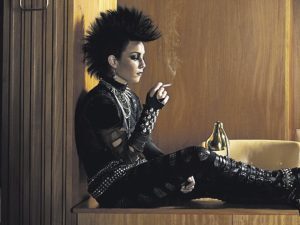
#3 – DO Employ Unique Physical Attributes.
Give characters distinctive physical attributes that set them apart. These attributes can be memorable and contribute to their overall identity. One notable example is the character Lisbeth Salander from Stieg Larsson’s “The Girl with the Dragon Tattoo.”
Lisbeth’s physical appearance, complete with tattoos and piercings, sets her apart from societal norms and immediately grabs attention. Her body serves as a canvas that tells a story of rebellion, nonconformity, and a refusal to be defined by societal expectations. The tattoos adorning Lisbeth’s body are not mere decorations but personal symbols of her past and present. They reflect her experiences, struggles, and determination to forge her own path. Each tattoo holds significance, representing a chapter of her life, from a fiery dragon symbolizing her inner strength to the intricate tribal patterns representing her connection to her roots.
Furthermore, Lisbeth’s piercings, particularly her facial piercings and distinctive hairstyle, further contribute to her unique physicality. They act as an armour, a visual representation of her wariness towards others and her desire to maintain control over her body and identity.
These physical attributes become a part of Lisbeth’s allure and mystery. They pique our curiosity and invite us to delve deeper into her complex psyche. By employing these unique physical attributes, Larsson not only creates a visually striking character but also adds layers of depth to her personality and backstory.
Lisbeth’s physicality challenges societal norms and expectations, making her a symbol of empowerment for those who dare to defy conventions. She breaks free from traditional notions of femininity and embraces her individuality, becoming a force to be reckoned with.
Lisbeth’s physicality reminds us that appearances can be powerful tools for storytelling, adding layers of complexity and intrigue to a character’s narrative.
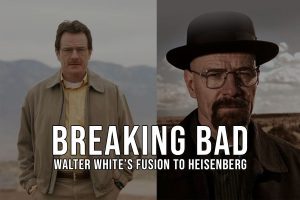
#4 – DO Utilize Physicality to Symbolize Transformation.
Physical changes can be used to symbolize character growth or transformation throughout a story. In the hit series “Breaking Bad,” the character Walter White, portrayed by Bryan Cranston, undergoes a remarkable physical transformation that reflects his descent into darkness and the emergence of his alter ego, Heisenberg.
At the beginning of the series, Walter is a mild-mannered, unassuming high school chemistry teacher. His physical appearance aligns with his meek persona, featuring glasses, a clean-shaven face, and unremarkable clothing. However, as Walter becomes entangled in the world of drug manufacturing and crime, his physicality undergoes a radical change.
As his moral boundaries blur and his confidence grows, Walter begins to adopt a more rugged appearance. He grows a scruffy beard, lets his hair grow longer and messier, and wears a distinctive black hat. These visual cues signify Walter’s transformation into Heisenberg, his alter ego and criminal mastermind.
The physical changes in Walter’s appearance symbolize his departure from his former self and his embrace of a new, darker identity. They reflect his growing assertiveness, calculated approach to decision-making, and his willingness to embrace a ruthless persona in order to achieve his goals.
Throughout the series, Walter’s physical transformation serves as a visual representation of his evolving character. It not only allows the audience to witness his progression but also adds depth and complexity to his story. The change in physicality reflects the psychological shifts within Walter, capturing his transformation from a mild-mannered teacher to a morally ambiguous and dangerous figure.
By utilizing physicality to symbolize transformation, “Breaking Bad” illustrates the profound changes that can occur within a character. It reminds us that external appearances can mirror internal shifts, and that the physicality of a character can be a powerful tool for storytelling.
So, when creating your own characters, consider how their physicality can reflect their transformative journeys. Explore how changes in appearance, grooming, or wardrobe can symbolize shifts in their identity, motivations, or moral compass. Let their physical transformation captivate viewers and enrich their narrative.
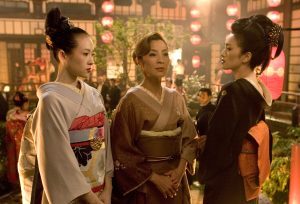
#5 – DO Consider Cultural and Historical Context.
Take into account the cultural and historical context of your story when defining a character’s physicality. This ensures authenticity and adds depth to their portrayal.
In the film “Memoirs of a Geisha,” directed by Rob Marshall, cultural and historical context heavily influences the portrayal of characters and their physicality. The story is set in Japan during the 1920s and 1930s, a time when geisha culture flourished and traditional Japanese customs were deeply ingrained.
The physicality of the geisha characters in the film reflects the cultural and historical context of the time. Geishas were known for their distinct appearance, characterized by the elaborate kimonos they wore, the intricate hairstyles adorned with ornaments, and the iconic white face makeup. These physical attributes were an integral part of the geisha tradition and served as symbols of beauty, grace, and elegance.
Furthermore, the film delves into the meticulous training and rituals that geishas underwent, showcasing their precise movements, postures, and gestures. These physical nuances were essential in conveying the refined and disciplined nature of geisha culture, rooted in centuries of tradition.
The cultural context of “Memoirs of a Geisha” also explores the hierarchical structure of Japanese society and the expectations placed on women during that era. The physicality of the characters, particularly the geishas, reflects the idealized beauty standards of the time, emphasizing poise, modesty, and subtlety.
By considering the cultural and historical context, “Memoirs of a Geisha” transports viewers to a specific time and place, immersing them in the intricacies of geisha culture. The attention to detail in the characters’ physicality provides an authentic representation of the customs and aesthetics of that period.
This example highlights the importance of cultural and historical context when creating a character’s physicality. It demonstrates how physical attributes, movements, and traditions can be used to enhance the authenticity and richness of a character’s portrayal, effectively transporting the audience to a different time and culture.
Now to the 4 DON’Ts in Creating a Character’s Physicality. #1 – DON’T Rely Solely on Stereotypes.
#1 – DON’T Rely Solely on Stereotypes.
Avoid relying on stereotypes when creating a character’s physicality, as it can perpetuate biases and limit character depth. Challenge conventional expectations to create well-rounded and authentic individuals. Steer clear of predictable appearances, such as the “dumb jock” or “nerdy glasses-wearing” character types.
In the movie “The Hangover,” there’s a character named Mr. Chow, played by the hilarious Ken Jeong. Now, while Mr. Chow is a memorable character, we can’t help but notice that his physicality falls into some tired old stereotypes.
You see, Mr. Chow is portrayed as this over-the-top, hypersexualized, and eccentric dude. He’s got the flashy clothes, the flashy accessories, and even a flashy hairstyle. Oh, and let’s not forget his broken English and exaggerated mannerisms. It’s like they took every Asian stereotype in the book and crammed it into this character.
Now, relying solely on stereotypes like this is a big no-no. It perpetuates harmful and offensive portrayals of Asian characters. It’s not cool to reduce someone’s identity to a bunch of clichés and one-dimensional traits. We need to move beyond these tired tropes and give characters more depth and authenticity.
“The Hangover” may have been a hit, but it faced criticism for falling into these stereotypes. It’s a reminder that as creators, we have a responsibility to challenge these stereotypes and create characters that break the mold.
So, let’s learn from Mr. Chow’s exaggerated physicality and use it as a lesson. Instead of relying on stereotypes, let’s strive for more nuanced and authentic portrayals. Let’s celebrate diversity and give our characters the complexity they deserve.
Remember, when it comes to creating character physicality, it’s all about breaking free from stereotypes and embracing the wonderful diversity of humanity. Let’s create characters that make us laugh, cry, and feel all the feels without resorting to tired old clichés.
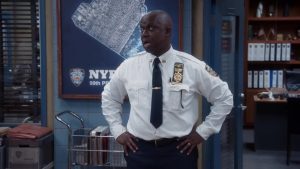 #2 – DON’T Neglect Diversity.
#2 – DON’T Neglect Diversity.
Representation and inclusivity are essential. Embrace diversity in physicality to reflect the real world and engage with a broader audience. In the awesome TV show “Brooklyn Nine-Nine,” they totally rock at embracing diversity and giving us characters that break the mould.
Let’s talk about Captain Raymond Holt, played by the amazing Andre Braugher. Captain Holt is a force to be reckoned with! He’s not your typical police captain. First of all, he’s black, and he’s proudly gay. Representation matters, and Captain Holt brings it in full force.
His physicality is all about sophistication, professionalism, and keeping his cool. He’s got this composed demeanor that would make anyone think twice before messing with him. And here’s the best part: he doesn’t fall into those tired old stereotypes.
The show doesn’t reduce Captain Holt to just his race or sexual orientation. They focus on his leadership skills, his smarts, and his personal growth. It’s all about showing us the complexity and depth of this amazing character.
By including Captain Holt’s diverse physicality and his experiences as a black, gay man, “Brooklyn Nine-Nine” goes beyond the norm. They tackle important social issues while giving us a character who’s relatable and inspiring.
 #3 – DON’T Overemphasize Physical Perfection.
#3 – DON’T Overemphasize Physical Perfection.
Characters with flaws and imperfections are relatable and compelling. Avoid creating characters who possess unrealistic and flawless physical attributes, as it can alienate readers and viewers. In the fabulous movie “Pitch Perfect” the amazing character of Fat Amy, is played by the hilarious Rebel Wilson.
Fat Amy is a total queen who breaks all the rules of overemphasizing physical perfection. She’s confident, funny, and oh-so-talented. And guess what? She’s a plus-size superstar!
In “Pitch Perfect,” they don’t focus on Fat Amy’s size as the be-all and end-all. Nope, they celebrate her wit, her comedic timing, and that killer voice of hers. It’s all about her personality shining through, not some societal beauty standards.
The movie flips the script and shows us that you don’t need to fit into a narrow idea of physical perfection to be loved, talented, and successful. Fat Amy proves that beauty comes in all shapes and sizes, and it’s what’s inside that truly counts.
By giving us a character like Fat Amy, “Pitch Perfect” brings much-needed representation to the screen. It tells us that it’s okay to embrace who we are, no matter our size. And that confidence and authenticity are the real keys to slaying the game.
 #4 – DON’T Disregard Character Development.
#4 – DON’T Disregard Character Development.
Ensure that a character’s physicality aligns with their growth and development throughout the story. Characters should not remain stagnant physically. In the fabulous movie “The Devil Wears Prada” the amazing character transformation of Andy Sachs, played by the talented Anne Hathaway is a great example of it.
At the start of the movie, Andy is rocking that casual and laid-back vibe. She’s a journalist with a “I-don’t-care-about-fashion” kind of look. But once she steps into the fashion world, things start to change!
As Andy dives headfirst into the glamorous and cutthroat fashion industry, her physicality gets a major upgrade. She goes from “casual chic” to “fashionably fierce” in no time. Her wardrobe goes from basic to breathtaking, with stylish outfits that make heads turn. And let’s not forget the stunning hair and makeup that showcase her newfound fashion sense.
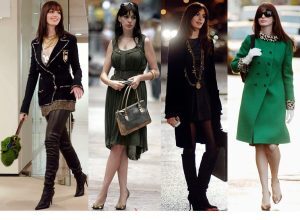 This transformation isn’t just about clothes and cosmetics. It’s a visual representation of Andy’s personal growth and professional journey. As she embraces the world of fashion, her physical appearance evolves, reflecting her deepening understanding and love for the industry.
This transformation isn’t just about clothes and cosmetics. It’s a visual representation of Andy’s personal growth and professional journey. As she embraces the world of fashion, her physical appearance evolves, reflecting her deepening understanding and love for the industry.
“The Devil Wears Prada” reminds us that character development isn’t just about what’s happening on the inside—it’s about how it shines through on the outside too. Andy’s physical transformation is a powerful symbol of her growth, ambition, and newfound confidence.
In Conclusion – let’s harness the power of physicality to breathe life into our characters, celebrate their uniqueness, and captivate the hearts of readers and viewers alike. Remember, the way our characters look, move, and present themselves can truly make a difference in the impact and resonance of our stories.
Now it’s YOUR TURN – In your opinion, which movie or TV show successfully utilized physicality to symbolize a character’s transformation?
Would love to get your input in the comment box below.
The post Creating a Character’s Physicality appeared first on Vered Neta.
May 7, 2023
The New Villains – Why Are We Fascinated by Them
For as long as we’ve had stories, we’ve had villains. These characters are often the driving force behind a narrative, providing conflict and challenge for our heroes to overcome. But in recent years, we’ve seen a rise of new types of villains in movies that are not only fascinating but also eerily relatable.
Gone are the days of the moustache-twirling, one-dimensional villains. Instead, we’re presented with villains who are complex, multi-layered, and even sympathetic in some cases. These new villains are intriguing, leaving us wanting to know more about their motivations and backstory.
One such villain is Killmonger from the 2018 film “Black Panther.” Killmonger is the cousin of T’Challa, the titular Black Panther, and seeks to take over the kingdom of Wakanda. However, his motivations are not just for power, but to use Wakanda’s resources to help black people around the world fight against oppression. While his methods are extreme, his goals are not entirely unfounded, making him a villain that audiences can understand and even sympathize with.
Another example of a complex villain is Thanos from the 2019 film “Avengers: Endgame.” Thanos is a powerful and menacing villain, seeking to wipe out half the universe’s population to restore balance. While his actions are horrific, the film takes the time to explore his backstory and motivations, making him more than just a one-dimensional bad guy.
These new villains are not just compelling characters; they also reflect the complexities and nuances of our world today. Many of these villains are motivated by ideologies and beliefs that are relatable to real-life situations. In “Joker” (2019), the titular character is a victim of societal neglect and a system that has failed him, leading to his descent into madness. While we can condemn his violent actions, we can also understand how his circumstances led him to that point.
The popularity of these new types of villains reflects a shift in how we view storytelling. Audiences are no longer satisfied with black-and-white morality tales. Instead, we want stories that challenge us to think and explore complex themes and ideas.
As we delve deeper into the world of modern storytelling, we begin to realize that there are six new types of villains that embody the shifting cultural and societal norms of our time. These captivating characters not only reflect the complex issues of our society, but also offer an opportunity for writers to create thrilling and thought-provoking stories that keep audiences on the edge of their seats.
Here Are 6 Types of New Villains That Would Get the Audience Hooked.
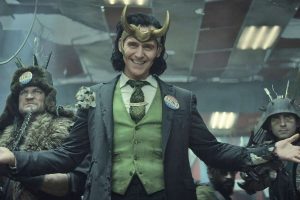
#1 – Sympathetic Villains.
These multifaceted characters elicit sympathy and understanding from audiences, making them some of the most compelling and complex antagonists in recent years. These villains have a rich and intricate backstory that often includes significant trauma or suffering, which has led them to their current path.
Despite being in opposition to the protagonist, their motivations and actions are understandable, and their causes may be noble, even if they involve harming others.
One such example is Loki from the Marvel Cinematic Universe, a character whose troubled past and complicated relationship with his brother Thor make him an endlessly fascinating character to watch. The audience can’t help but feel for his struggles, even as he battles against the heroes.
In essence, sympathetic villains offer a fresh and captivating take on the traditional antagonist, giving audiences a chance to engage with complex and multidimensional characters. They provide a glimpse into the motivations and experiences that drive people to make questionable choices, and force us to question our own moral compass. So be ready to root for the “bad guy” and feel their pain, because with these villains, it’s never just black and white.
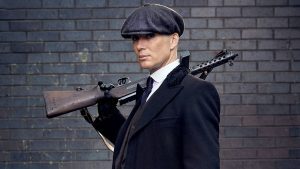 #2 – Antiheroes.
#2 – Antiheroes.
Are you ready to meet the most intriguing and captivating heroes in modern storytelling – the antiheroes? These complex characters may be the protagonists, but they do not possess the traditional heroic qualities that we often associate with heroes. Unlike traditional heroes, antiheroes are not always selfless, moral, or altruistic. Instead, they often possess morally ambiguous, flawed, or even outright villainous qualities that make them all the more fascinating.
What sets antiheroes apart is their unpredictability and the unconventional ways they operate. They may have their own personal codes of conduct and engage in actions that are violent, illegal, or morally questionable to achieve their goals.
One of my favourite examples of such a character is Thomas Shelby from “Peaky Blinders”. Despite being the leader of a criminal gang, Thomas’ code of honor and willingness to fight against injustice make him a captivating and multidimensional character.
Overall, antiheroes are characters who challenge our expectations of what it means to be a hero. They may not be conventional heroes, but their complexity and ambiguity make them all the more captivating and compelling. So buckle up and get ready to see the world through the eyes of the antihero, because it’s a wild and fascinating ride.
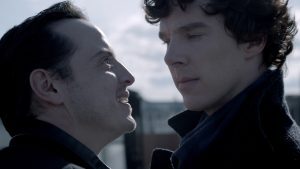 #3 – Chaotic Villains.
#3 – Chaotic Villains.
What makes chaotic villains so fascinating is their unpredictability and their disregard for societal norms and rules. They often operate outside of conventional moral boundaries and may have their own personal codes of conduct that prioritize chaos and destruction over anything else. This makes them challenging and dangerous opponents for the protagonist, who may struggle to understand or anticipate their actions.
There is no better example of such a villain than Moriarty from “Sherlock”. Moriarty is a criminal mastermind who is motivated by a desire to upset the status quo and challenge Sherlock’s sense of order. He operates outside of conventional moral boundaries and is completely unpredictable in his actions.
Overall, chaotic villains are characters who are motivated by a desire for chaos and destruction. They often operate outside of conventional moral boundaries and may be completely unpredictable in their actions. While they may be dangerous opponents for the protagonist, they are also fascinating and compelling characters due to their unpredictability and disregard for societal norms and rules.
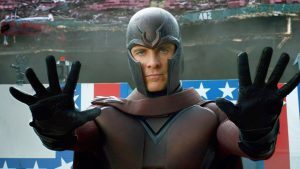
#4 – Ideological Villains.
Ideological villains are the type of villains who are driven by a belief in a particular ideology or belief system. They are often motivated by a desire to impose their beliefs on others, or to eliminate those who do not share their beliefs.
What makes ideological villains so compelling is their conviction and their willingness to commit atrocities in the name of their ideology. They are often completely convinced that they are in the right, and may see themselves as martyrs or heroes fighting for a greater cause. This conviction can make them dangerous opponents for the protagonist, who may struggle to convince them to see reason.
One such villain is Magneto from the “X-Men franchise”. Magneto is motivated by a belief in mutant supremacy and the need to protect mutants from persecution. While his methods are often violent and extreme, his motivations are understandable, making him a compelling and nuanced character. Knowing his backstory as a young Jewish boy who witnessed his mother shot in front of his eyes and turned into a scientific experiment makes him also a sympathetic villain.
Overall, ideological villains are characters who are driven by a belief in a particular ideology or belief system. They are often completely convinced that they are in the right, and are willing to commit atrocities to achieve their goals. While they may be dangerous opponents for the protagonist, they are also fascinating and compelling characters due to their conviction and their willingness to commit extreme acts in the name of their ideology.

#5 – Corporate Villains.
In today’s world, it seems like big corporations and governments are often seen as corrupt and evil. And it’s no wonder why – corporate villains are the perfect example of greed and power gone wrong. These villains are motivated by profit and will stop at nothing to achieve their goals, even if it means engaging in illegal and unethical practices that harm others.
But what makes corporate villains truly captivating is their ability to manipulate the system and bend the rules to their will. With their vast wealth and resources, they can pull strings and make things happen that most people wouldn’t even dream of.
Take Jordan Belfort from “The Wolf of Wall Street” for example. He’s a master manipulator who uses illegal means to become one of the richest men in America. His greed and disregard for others make him a villain you love to hate.
While they may be dangerous opponents for the hero, corporate villains are intriguing characters that captivate us with their cunning and deceitful ways. They remind us that not everything is as it seems and that the pursuit of power and money can lead to some dark places.
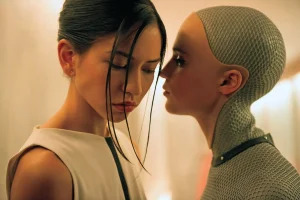 #6 – Technological Villains.
#6 – Technological Villains.
These are a type of new villains that have emerged in recent years, particularly in science fiction movies and TV shows. These villains are typically driven by a desire to control or manipulate technology in some way, often with disastrous consequences. They might be robots, androids, or other AI, or they might be human characters who are experts in technology.
What makes technological villains so fascinating is their ability to manipulate and control the world around them using technology. They might use advanced hacking techniques to infiltrate computer systems, or they might use robots to carry out their bidding. They might be motivated by a desire for power or control, or they might simply be acting on their own programming.
One of the key themes of technological villains is the question of what it means to be human. Many of these villains are AI that are capable of learning and evolving, and they often struggle with questions of morality and ethics. This makes them complex and fascinating characters, as audiences are forced to grapple with the idea of what it means to be human in a world where machines are becoming more and more advanced.
Overall, technological villains represent a new type of villain that is uniquely suited to the modern era of technology and science fiction. With the increasing integration of technology into our daily lives, these villains are likely to become even more relevant and compelling in the years to come.
A good example is Ava from “Ex Machina”. Ava is a highly advanced AI created by a reclusive billionaire, and she’s capable of manipulating those around her in order to escape her confinement. Her intelligence and her lack of morality make her a fascinating and dangerous villain.
In conclusion – the new wave of villains in movies and TV shows reflects the changing cultural and societal norms of our time. The rise of technology, the changing attitudes towards morality and justice, and the increasing awareness of social and political issues have all contributed to the emergence of new types of villains.
From the sympathetic to the ideological, from the corporate to the chaotic, these villains offer a rich and complex array of characters for audiences to engage with. While they may be dangerous and terrifying, they also provide a window into our own fears, desires, and motivations. By exploring the new villains of our time, we can gain a better understanding of ourselves and our society, and perhaps even find new ways to confront the challenges of the world around us.
Now it’s YOUR turn – Who is your favourite villain from any book or movie and why?
Would love to get your input in the comment box below.
The post The New Villains – Why Are We Fascinated by Them appeared first on Vered Neta.
May 1, 2023
Talk Of The Devil – Short Story
‘Is there a heartbeat, can you hear a heartbeat?’
She felt her doctor’s cool hands on her belly. It allowed her to keep her fears at bay.
‘Yes, all’s well.’
She knew she was not afraid for the baby, but for her sanity. Being pregnant had not been something she’d planned or prepared for. Anything out of the ordinary made her concerned and edgy.
‘What’s got into you? Your pregnancy is fine, all is good, and the baby is doing well.’ Her doctor reassured her.
The doctor was her rock. She knew she could trust her. Her doctor was kind and patient. It was one of the reasons she chose her. From the first time she visited her, still debating whether to keep this pregnancy or not, she felt safe with her. Her doctor was her lifeline to sanity. She called her ‘Grace’ in her mind.
God knows how much I need it.
Though fully informed about her situation, the doctor never pressured her in any direction. She only gave her space to articulate her fears, doubts and questions while offering the medical information she needed or the various options she had.
In the end she’d chosen to keep the baby. She knew her doctor would honour her promise to be by her side all the way through the pregnancy. She needed a friend who would not judge or criticize her for her life decisions.
But today was different. Today she felt a tone of disapproval about her fears emanating from the doctor, as if it was not normal to be afraid for your unborn child.
‘Do you want to tell me what’s troubling you?’
If only she knew…
‘Is it possible to hear your baby talk?’
The doctor blinked in surprise, then smiled. ‘I don’t know about hearing your baby talking, but we know it’s good to talk to them. It creates a bond.’
‘So, I’m not going crazy if I hear her talking to me?’
‘No. You’re not. I’m happy to hear you are connecting with your child, even in your circumstances. By the way, how do you know it’s a ”her”? You didn’t want to know the gender.’
‘She told me.’
Her doctor chose her next words carefully. ‘I see. What else has she said to you?’
‘You don’t want to know. You’ll just think I’m going crazy.’
‘I’m your physician and friend; everything that affects you is part of my job.’
She stared at her doctor, too ashamed to respond. Instead, she gave her a shy smile. She hoped it would be enough to stop the doctor from prodding. She started playing with her wedding ring, rubbing, and twisting it to cover for the silence between them.
The silence seemed to stretch between them. She wanted to tell Grace everything, but the words seemed to stick in her throat like fish bones. Finally, the doctor sighed, glancing at the clock.
‘That’s all the time we have, I’m afraid. My next patient is waiting. Maybe I can come by your place tomorrow and we’ll go out for lunch? Oh…scratch that, I know you can’t.’
‘No… that will be great, but I’ll text you when I can and where.’
She got off the treatment table, brushed down her dress and walked out.
Back at home she realized how late the time was. She looked around the house, checking it over. It was in an impeccable order, there was nothing out of place.
She went to the kitchen and took out some Tupperware boxes she had prepared that morning. She started warming it in the microwave, double-checking the time.
‘Mum.’ A small voice whispered.
She focused on the microwave going round and round. She refused to listen to the small voice emanating from deep inside her. The voice grew in volume.
‘Mummy.’
‘No,’ she answered in her mind, forcing herself to stay calm. ‘You’re not real.’
‘I am real,’ the little voice said, ‘and I think you know that too.’
‘What do you want?’
‘You know what I want.’
‘You’re not real… you’re not real,’ she kept repeating in her mind, ‘I can’t do it’.
‘Well… he’s coming… he’s always on time… you better be ready…’
‘Stop it … just stop it!’ She took a deep breath and tried to calm her heartbeat that ricocheted around her ribs like a caged bird.
‘Silly woman, you can’t stop me… I’m you ’
‘Hey honey, I’m home!’ Her husband’s voice was light as he called out this stereotypical sitcom line. ‘What a day. I need my beer.’
She put the plate on a tray, fetching his Budweiser from the fridge. She poured it into a glass, making sure no drop was spilled. She checked the food she’d heated up. Not too hot and not too cold. Just the way he liked it. She plated up the food, ensuring it was presented well. Her husband liked his meals laid out properly. ‘You eat with your eyes first,’ he always said.
She carried the tray through to the living room; her husband was already plopped on the sofa opposite the TV. She set the tray down on the coffee table in front of him and remained standing, waiting to hear what his complaint would be this time. When there was none, she turned to leave.
‘How was your check-up today?’
‘Fine. The baby’s doing well.’
She did not add her own fears about the baby. Who would believe her if she told them she’s afraid the devil is growing inside her? That was the stuff of nightmares Hollywood put in shiny silver packaging and charged four ninety-nine a month on the streaming platform of your choice.
‘Good.’
She walked back to the kitchen and made a small salad for herself. As she chopped and washed lettuce, she felt the slice of the knife on her finger. It did not hurt. She’d become numb to pain a long time ago. As she watched blood well up from the wound, that voice cut through her thoughts again.
‘You have a choice. Get rid of him.’
‘No. This isn’t happening.’
‘it’s kill or be killed and you know it.’
‘No!’ She murmured, ‘He’s got his problems, I know that. But he’d never …’
The voice did not answer and somehow it was even worse. What if the baby was right?
She tried to return to making her dinner but was unable to keep steady. She sat down on a kitchen chair and reached out for her bag. She rooted through it, searching for her iPod and earphones. She grabbed the iPod plugged in the earphones and blasted the music in her ears.
It worked. The music distracted her and meant she could breathe easier. The music pumping in her ears, she took tentative bites of her salad. He’d insisted years ago she keep her figure, so she wasn’t allowed to eat the same food as her husband. She dreaded the inevitable weight gain of pregnancy. She concentrated on the music, rather than the bland food.
Suddenly: pain. An open hand hit the back of her head, hard. She almost fell off her chair with the force. The salad bowl fell from her hands, smashing on the kitchen tiles. Stupefied, she removed the earphones and blinked, thoughts reeling. Her husband was standing over her, his face contorted with fury.
‘Are you deaf? I’ve been calling for you for five minutes!’
‘I’m sorry!’
Too late. Her husband was on a roll. He balled up his fist and brought it down again; forewarned this time, she managed to dodge so this time, but not fast enough. She cried out as his fist connected with her collarbone.
‘Please … don’t!’
No mercy was forthcoming from her husband. Hours later, she felt safe enough to get up from the floor, knowing he had left the house to go to his usual bar. The one good thing she could tell herself during his fit of rage was it blocked her from hearing the baby talk.
‘I told you, you need to get away from him. If you ever want me safe you must get rid of him …’
She knew she had to leave him. But where would she go? Her parents would certainly not take her. She had no profession, no income and nobody who would help her. She heard about organisations that help women like her, but she was too afraid to approach them for the fear of someone seeing her going in the building. She couldn’t even look online or on her phone because he checked them daily. Even erasing her browser history would bring forth his suspicions and yet more rage.
No. It was no use, she was stuck with him. Besides, she still remembered the times before. Before he was sent to that damn war. Before he came back as a shadow of his own self; before the devil had taken his soul. She still longed for that young man who was her loving partner who always made sure she was taken care of.
‘He’s not that anymore. you don’t need him!’
She got up from the floor, her body screaming with pain. The black bruises were appearing on her arms that had covered her head as he’d rained down blows on her. She dragged herself to the bathroom and started filling the bath. She added salts to help soothe her sore muscles.
Once the bath was full, she slipped into it gently. Each movement she took was a balancing act between pain and bravery. As she submerged in the warm water, that voice pierced her thoughts again. She took a deep breath, held her breath and sank down to the bottom of the bath so that the water would cover her ears.
She was disappointed again.
Kill him… kill him… kill him…
No matter how long she held her breath underwater, she could not block out the voice. Unable to hold her breath any longer, she emerged from under the water.
‘No.’ She hissed to herself, ‘No!’
Finally, the voice was quiet. She allowed herself a few more minutes in the warm relaxing water. Exhaustion after her husband’s attack overcame her. She drifted off into sleep.
She woke up an hour later. The water was cold. Shivering, she got out, wrapping herself in a bathrobe and looked at her face in the mirror. As expected, she had a black eye and a cut on her temple where his ring hit her. She combed her hair in such a way that would cover it. There was nothing she could do about her eye, except remain at home until it healed.
She walked into her bedroom, hoping he had not yet returned from his nightly drinking binge. To her relief he wasn’t there. She could slip into her bed hoping to find relief in her sleep.
She was fortunate that night; sleep came easily to her. She found herself walking in a forest through the mists. She knew she was dreaming.
In the dream, her body felt the chill around her. It was no ordinary forest, and she knew she had to find a way out of it otherwise she would die. Every step she took the trees and the mists closed on her. She wanted to scream; she opened her mouth to scream but no sound came out of it.
‘If only I could get out of this mist, I’ll be able to wake up.’ She thought.
She started ploughing her way through the mist, only to discover the harder she struggled, the stronger the threat became. She was suffocating. It was as if something, or someone, was pressing against her chest, preventing her from breathing.
She had to find a way out of this dream.
Her arms pushed through the mist. When she finally got through it, instead of waking up, she found herself trapped within cobwebs. As she thrashed against the webs, she felt something sharp in her hand.
She grabbed it, using it to cut through. There was a rhythm in her movements; she could hear some distant music that helped her move and cut the webs. Her whole body was twitching and swirling as if she was a dancer cutting through air. With the beats, she became clear of the words that accompanied the music.
Kill, kill, kill…
The webs finally gave way. She fell onto the forest ground, breathless and shaking. She prayed she would wake up from this strange dream. She sensed something sticky and wet on her hands and body. She opened her eyes and a scream tore from her lungs as she awoke.
Red.
All around her.
It was everywhere.
She was back in her bedroom. She could hear her baby calling to her.
‘You’re free. no more devil, only me…’
Her bedroom looked as if a hurricane had swirled through it. The sheets on her bed were tangled, torn, and smeared with crimson. She glanced at her hands. They were dripping with blood. She whimpered in fear as she caught sight of something at the foot of the bed.
Her own private devil.
She knelt next to her husband’s unmoving body. She wanted to check if there was a pulse but had no energy or courage to do it.
There was only one person who could help her.
She dialled the number. In less than fifteen minutes her doctor was beside her. She knew she didn’t have to explain anything to her. Grace knew the devil inside of her had taken care of the other one in front of them right now.
‘Is there a heartbeat, can you hear a heartbeat?’
‘No. All’s well now.’
The post Talk Of The Devil – Short Story appeared first on Vered Neta.
April 30, 2023
7 Reasons Why “Circe” is The Perfect Book for Today.
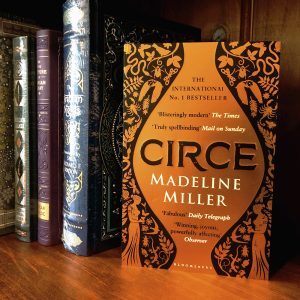 You know what they say: timing is everything. And the same goes for books! Some books become hits not just because of their story, but because they hit that sweet spot where the story perfectly aligns with what the audience is looking for. It’s like when you bite into a perfectly ripe strawberry and it’s just the right amount of sweet – that’s what “Circe” by Madeline Miller is like for readers.
You know what they say: timing is everything. And the same goes for books! Some books become hits not just because of their story, but because they hit that sweet spot where the story perfectly aligns with what the audience is looking for. It’s like when you bite into a perfectly ripe strawberry and it’s just the right amount of sweet – that’s what “Circe” by Madeline Miller is like for readers.
Interestingly enough, “Circe” was published on Valentine’s Day, which was a stroke of genius marketing because even though the book isn’t your typical sappy romance, it does explore themes of love and passion in a unique way.
The novel tells the story of Circe, the daughter of Helios, the god of the sun, and a nymph named Perse. Circe is a misfit among her fellow immortals, but she discovers her love for witchcraft and mortals. When she angers her father by turning a mortal man into a god, she is banished to the island of Aeaea.
Circe creates a sanctuary on Aeaea for exiled women and encounters famous mythological figures like Odysseus, who becomes her lover. Throughout the book, she struggles with finding her place in the world and coming to terms with her immortality. But in the end, she learns to embrace her power and carve out her own path in the world.
Historical novels, especially ones set in ancient times, usually have a specific niche audience. But “Circe” has become a phenomenon, transcending its genre and captivating readers of all kinds.
Here are 7 reasons why “Circe” is the perfect book for this day and age: #1 – Feminist Perspective.
#1 – Feminist Perspective.
In the wake of the #MeToo movement and other feminist movements, there is a growing interest in stories that challenge traditional gender roles and highlight the experiences of women.
Circe is a powerful female character who defies the expectations of her society, and Miller’s portrayal of her encourages readers to question gender norms and biases that still exist in our society.
#2 – Reimagining of a Classic Myth.
Our world is full of stories that are retold, reimagined, and updated to fit new cultural contexts and perspectives.
Miller’s retelling of the story of Circe offers a fresh take on a classic myth, showing how these stories can be updated to speak to modern readers and help us connect with our ancient roots.
 #3 – Themes of Power and Identity.
#3 – Themes of Power and Identity.
In an era where identity politics and power struggles dominate the political landscape, “Circe” explores the themes of power and identity nuancedly, encouraging readers to consider their own relationships to these issues.
This is particularly relevant at a time when we’re seeing major shifts in power dynamics around the world, and where people are grappling with their own sense of identity in a rapidly changing society.
#4 – Strong Female Characters.
We still live in a time where the representation of women in media and popular culture is still limited, it is refreshing to encounter a book like “Circe” that features a range of complex, multidimensional female characters.
By seeing women in these roles, readers are encouraged to expand their own ideas of what women are capable of.
#5 – Timeless Themes.
Although “Circe” is set in ancient Greece, its themes are universal and still relevant today.
The book explores love, loss, power, identity, and many other issues that are part of the human experience, regardless of time or place.
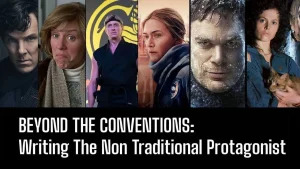 #6 – Exploration of Human Nature
#6 – Exploration of Human Nature
In an increasingly polarized and divided world, there is a growing need to understand and empathize with people whose experiences and beliefs differ from ours.
“Circe” offers a nuanced exploration of human nature
#7 – Unconventional Protagonist.
Circe is not the typical protagonist one might expect in a retelling of a Greek myth. By centring the story around an unconventional protagonist like Circe, Miller offers a new perspective on the traditional hero’s journey. Circe is flawed, complex, and often at odds with the world around her, which makes her a more relatable and realistic character than many other mythic heroes.
In conclusion – “Circe” is a book that offers something for everyone. With its strong female characters, universal themes, and beautiful writing, it is a compelling and thought-provoking read that hits all the points that would trigger readers to go and buy it. It’s a fantastic example of how a good story can also be commercial and thus successful.
Now it’s YOUR turn – What do you think makes this book unique compared to others you’ve read in the same genre?
Would love to get your input in the comment box below.
The post 7 Reasons Why “Circe” is The Perfect Book for Today. appeared first on Vered Neta.
April 23, 2023
Beyond Surface Level – 5 Ways to Use Symbolism
Imagine this: you’re reading a book or watching a movie, and suddenly you notice a symbol or metaphor that seems to be speaking directly to you. It’s like a secret code that reveals a character’s innermost thoughts and feelings, without them ever having to say a word. That’s the power of symbolism and metaphors, the hidden gems in a writer or filmmaker’s toolbox.
But how can they be used effectively without being too obvious or repetitive? The key is to employ a diverse range of symbolism and metaphors, each one unique and nuanced in its own way.
It’s like having an arsenal of secret weapons, each one tailored to the needs of the story and the characters involved. With this approach, you can create a world that is rich with meaning, and keep your audience hooked from start to finish.
Here are 5 Ways to Use Symbolism and Create a Rich Character: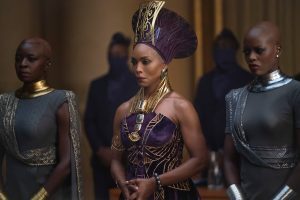 #1 – Use Color Symbolism.
#1 – Use Color Symbolism.
Have you ever been engrossed in a book or movie, only to suddenly realize that a character’s clothing, surroundings, or even the lighting all seem to be drenched in a particular colour?
You might think it’s just a coincidence, but it’s actually colour symbolism at work. Colours are like tiny mood rings for your story, reflecting different emotions and ideas to help convey a character’s inner state. And that’s just the beginning – there are so many creative ways to use colour symbolism in your storytelling!
One way colour can be used is to reflect a character’s emotional state. For instance, red can symbolize anger, passion, or danger, while blue can represent calmness, sadness, or melancholy. In “The Great Gatsby” by F. Scott Fitzgerald, green represents the elusive and unattainable American Dream that Jay Gatsby longs for, while also symbolizing his hope and envy.
Colours can also symbolize a character’s personality or traits. For example, black can represent mystery, power, or darkness, while white can represent purity, innocence, or goodness.
In “Black Panther,” the colour purple is used to signify royalty and power, shown in T’Challa’s purple suit as the king of Wakanda.
With colour symbolism, the possibilities are endless. It’s like having a secret language to convey the deeper meanings and emotions of your story. So, the next time you’re writing or watching a movie, keep an eye out for the colours used and what they might represent. You’ll be amazed at the hidden gems you uncover!

#2 – Use Nature Symbolism.
Nature is a writer’s or filmmaker’s playground, full of metaphors waiting to be used to create magic on the page or on screen.
From a stormy sky to a gentle breeze, nature can be used to reflect a character’s inner state in countless ways. The possibilities are endless!
In “The Secret Life of Bees,” Sue Monk Kidd uses the bees as a metaphor for the interconnectedness of life, which ultimately helps the protagonist grow and transform.
Similarly, in “The Secret Garden,” Frances Hodgson Burnett uses the garden to represent the protagonist’s transformation from a selfish child to a kind and empathetic one.
But nature can also be used to create contrast and tension in a story, as seen in “Life of Pi” by Yann Martel, where the protagonist’s fight for survival at sea is set against the backdrop of the ocean’s beauty and majesty.
So the next time you’re writing or watching a movie, take a moment to appreciate the beauty and potential of nature symbolism. Who knows what kind of magic you might create?

#3 – Use Animal Symbolism.
Welcome to the fascinating world of animal symbolism in literature and film. It’s a powerful tool that can unleash a plethora of meanings and emotions, making the audience feel like they are part of the story.
Here are some captivating ways animals can reveal a character’s inner state:
Animals can embody a character’s personality or traits, acting as a visual cue for their strengths and weaknesses. A lion can roar with strength and bravery, while a snake can slither with deceit and cunning.
In “The Wolf of Wall Street,” Jordan Belfort is depicted as a predator, using his charm and wit to manipulate others and amass his wealth. His character is strongly linked to that of a wolf, a cunning and ruthless predator.
Animals can also be used to create metaphorical relationships between characters. A bird might symbolize a character’s desire to escape a difficult situation, while a snake might represent someone slowly creeping into the lives of others.
In “To Kill a Mockingbird,” the mockingbird represents innocence and purity and is also used as a symbol of the unjust persecution of Tom Robinson and Boo Radley. The use of this animal helps to emphasize the themes of the book and highlight the character’s experiences.
Lastly, animals can be used to create contrast and tension in a story. A gentle character can be juxtaposed with a fierce animal, or a cowardly character might be compared to a brave one.
In “Watership Down” by Richard Adams, the rabbits are used to create a contrast between the peaceful and idyllic world of the rabbits and the harsh and dangerous world of humans. The rabbits are constantly at risk of being hunted or killed by humans, which creates tension and suspense throughout the story.
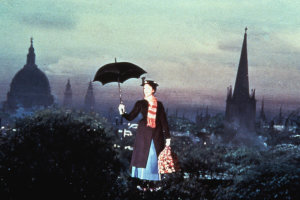
#4 – Use Object Symbolism.
Object symbolism is a fantastic literary tool that can evoke powerful emotions and meaning in the audience.
Let’s explore a few ways that it can be used to enhance a character’s inner state:
Objects can be used to represent a character’s history, present, or future. For example, a well-worn journal can represent a character’s memories, while a futuristic gadget can represent a character’s aspirations.
In “Wuthering Heights,” Catherine’s locket containing Heathcliff’s hair serves as a poignant symbol of the deep love and connection she shares with him, despite societal barriers that would keep them apart.
Objects can also create metaphorical relationships between characters, much like a mirror reflecting a character’s emotions and actions or an object symbolizing a character’s internal struggle.
In “Mary Poppins,” the umbrella she carries represents her magical abilities and her role as a caretaker and mentor to the Banks children. It also symbolizes the strong bond between Mary and the children, as she uses it to transport them to enchanting realms and keep them safe from harm.
Moreover, objects can create tension and contrast in a story. An object can serve to highlight a character’s poverty or simplicity when contrasted with luxurious ones, or an object can foreshadow significant events.
For example, the necklace in “The Necklace” by Guy de Maupassant symbolizes wealth and status. When Madame Loisel borrows it for a fancy ball, she creates tension with her husband as they struggle to replace it after it is lost. The loss of the necklace also highlights the economic and social struggles of the lower middle class, adding depth to the story.
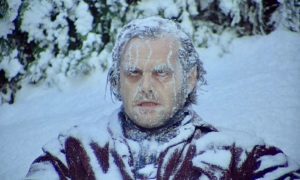
#5 – Use Weather Symbolism.
Weather symbolism is a tool that authors and filmmakers use to convey meaning and stir emotions in the audience.
Here are some ways it can be used to reveal a character’s inner state:
Weather can mirror a character’s emotional state. Imagine a stormy day representing someone’s inner turmoil or anger, while a sunny day conveys happiness or peace of mind.
In “A Streetcar Named Desire,” the sweltering heat of the New Orleans summer is a metaphor for the tension and conflict between the characters. The heat creates a suffocating atmosphere, reflecting the emotional intensity of their relationships.
Weather can also create metaphorical relationships between characters or events.
Think of a lightning storm symbolizing a sudden change or revelation, or a prolonged drought representing a character’s struggles or hardships.
In “The Grapes of Wrath,” the drought that devastates Oklahoma farmland is a metaphor for the emotional and economic devastation experienced by the Joad family and other migrants during the Great Depression. The lack of rain symbolizes the barrenness of the land and the characters’ hopelessness in the face of poverty and hardship.
Weather can also set the tone and atmosphere of a story. Imagine a foggy night creating a sense of mystery and unease, or a clear and starry night generating a feeling of peace and wonder.
In Stanley Kubrick’s movie “The Shining,” a snowstorm isolates the characters in the remote hotel, adding to the eerie and ominous atmosphere of the film.
Weather symbolism can give depth and richness to literature and film, allowing us to connect with characters on a deeper emotional level. Whether it’s a raging storm or a bright sunny day, the weather can speak volumes about the characters and the events unfolding around them.
In Conclusion – symbolism and metaphors can be used in a variety of fun and creative ways to reveal a character’s inner state. By using colors, nature, animals, objects, weather, metaphors, and symbolic actions, writers and filmmakers can add depth and complexity to their characters and stories. So next time you’re writing or watching a story, keep an eye out for these powerful tools and see how they’re being used to reveal the characters’ inner worlds.
Now it’s YOUR TURN – What’s your favourite example of symbolism or metaphor in literature or film?
Would love to get your input in the comment box below.
The post Beyond Surface Level – 5 Ways to Use Symbolism appeared first on Vered Neta.
April 16, 2023
Understanding a Character’s Motivation
Last week, I wrote about the Seven Deadly Sins of Writing, and I know it wasn’t easy to read. One of those sins was poor character development, and let’s be real, we’ve all been there.
Now, if you’re a Pantser and you’re knee-deep in your first draft, you don’t give much thought to your characters’ motivations. But trust me, it’ll come back to bite you in the butt during rewrites. That’s why you need to understand the crucial points in developing a character’s motivation.
For those who are Plotters (like me), you know how easy it is to get carried away with character development. But let’s focus on the basics and the most important points.
Developing a character with a clear and compelling motivation is an essential aspect of crafting a successful story. A character’s motivation drives their actions, defines their relationships, and makes them relatable to the audience.
Here Are 5 Crucial Factors to Consider When Getting Clear About a Character’s Motivation: #1 – Needs vs. Wants.
#1 – Needs vs. Wants.
In any story, characters are driven by two main motivations: their needs and their wants. Needs are essential for survival, such as food, shelter, and safety, while wants are desires that may not be necessary for survival but can significantly impact a character’s actions and decisions.
When crafting a character’s motivation, it’s crucial to differentiate between their needs and wants because the level of urgency and intensity of their actions will vary. Needs are often more critical and must be met for survival, while wants may drive a character’s personal goals and desires.
In the movie “Cast Away,” the protagonist Chuck Noland, played by Tom Hanks, is initially motivated by his need for survival after being stranded on a deserted island. His primary goal is to stay alive and find a way to escape the island, and his actions are driven by his need for food, shelter, and water. Later in the movie, his motivation shifts towards his want for companionship when he develops a relationship with a volleyball he names Wilson. The difference between his needs and wants drives the narrative and creates tension and conflict within the story.

#2 – Internal vs. External Motivation.
These are two distinct categories of character motivation. Internal motivations come from within, like a character’s personal beliefs, values, desires, and emotions. Think of it as their inner fire.
On the other hand, external motivations come from outside factors, like societal expectations, rewards, or even external forces or circumstances. Like a carrot on a stick, it’s something outside of the character that motivates them to act.
Understanding the difference between internal and external motivations is crucial because it helps you develop a character’s personality and create a believable character arc. With this knowledge, you can create nuanced characters that resonate with your audience and keep them hooked until the very end.
In the movie “The Social Network,” the protagonist Mark Zuckerberg is motivated by both internal and external factors. Externally, he is motivated by his desire for success and recognition as the creator of Facebook. Internally, he is motivated by his need to prove his worth and to be seen as a valuable member of society, despite his social awkwardness and lack of interpersonal skills.

#3 – Conflicts and Obstacles.
Conflicts are the central issues or problems that a character must face and overcome in order to achieve their goals. These conflicts can be external or internal, and they can range from interpersonal conflicts with other characters to larger-scale conflicts with societal or cultural norms.
Obstacles, on the other hand, are the specific challenges or barriers that a character must overcome in order to achieve their goals. These obstacles can be physical, emotional, or psychological in nature, and they are often related to the conflicts that the character is facing. For example, if a character is trying to save their family from a burning building, the obstacle might be a locked door or a collapsing floor.
Understanding the difference between conflicts and obstacles is essential because it helps you to craft more compelling and nuanced characters. By creating well-defined conflicts and obstacles, you can challenge your characters in meaningful ways that reveal their strengths, weaknesses, and values.
Furthermore, conflicts and obstacles can be used to reveal a character’s motivations and desires. For example, a character who is motivated by a desire for power may face conflicts and obstacles related to their pursuit of power, such as political opposition or personal betrayal. Similarly, a character who is motivated by a desire for love may face obstacles and conflicts related to their romantic relationships, such as a disapproving family member or a rival love interest.
Arthur Fleck In the movie “Joker,” is motivated by his desire for recognition and acceptance as a stand-up comedian. However, he faces numerous obstacles, including rejection, ridicule, and mental illness, which eventually drive him to become the Joker, a villainous character who seeks revenge against society.

#4 – Character Flaws.
We all have our own flaws, and our characters should too. Character flaws are negative qualities or traits that a character possesses, whether it’s a physical limitation or an emotional struggle. It could be something as simple as being clumsy or as complex as having a crippling fear of failure. These flaws can create problems for the character and those around them, which makes for great storytelling.
Understanding a character’s flaws is crucial because it allows you to create more complex and realistic characters that audiences can relate to and empathize with. Think about it – we connect with characters that are flawed because we see ourselves in them. Plus, character flaws can provide insight into a character’s motivations, beliefs, and values. It helps us understand why they act the way they do, which is essential in building a believable character.
And let’s not forget about the conflict! Character flaws can create tension and conflict within the narrative as characters struggle to overcome their flaws or deal with the consequences of their actions. It makes for compelling storytelling and keeps the audience engaged.
In the movie “Black Swan,” the protagonist Nina Sayers’ character flaw is her perfectionism and obsession. Nina is a talented ballerina who is chosen to play the lead in a production of “Swan Lake,” but her intense focus and desire for perfection begin to consume her. Her obsession with her role and the pressure to perform ultimately drives her to a mental breakdown.
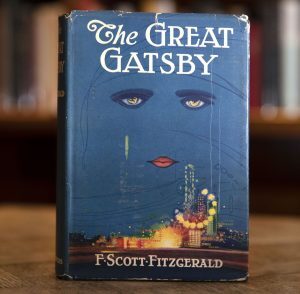
#5 – Change and Growth.
One of the most important aspects of creating engaging and memorable characters is incorporating change and growth. Character growth occurs when a character learns from their experiences and transforms throughout the story, while character change refers to a significant shift in their personality or beliefs.
But here’s a secret: not all characters need to change! Some can be the catalyst for transformation in those around them. Remember, without change, your story is as exciting as watching paint dry.
Understanding your character’s growth and change will help you create complex and relatable characters that your readers will love. It’s also an excellent way to reveal their motivations, values, and beliefs, which can create tension and conflict in your narrative. So, don’t be afraid to give your characters the opportunity to grow and evolve – your readers will thank you for it!
In “The Great Gatsby” the protagonist Jay Gatsby undergoes a tragic change over the course of the novel. Initially a wealthy and charismatic character, Gatsby is revealed to be a deeply flawed and unhappy man who is unable to let go of his past. Despite his attempts to win back his lost love Daisy, Gatsby ultimately realizes that his dream of happiness is impossible, leading to his
In Conclusion – by considering these 5 key elements, you’ll be able to craft characters that your readers will love and connect with. Always keep in mind that characters are the heart of your story, and understanding their motivations will help you tell their story in the most compelling way possible.
Now it’s YOUR TURN – What are some examples of well-developed characters in your favourite books or movies?
Would love to get your input in the comment box below.
The post Understanding a Character’s Motivation appeared first on Vered Neta.
January 4, 2015
Balance in Real Life
Let me start by wishing you all the best for 2015. This video is giving you all the A-Z of my wishes for you for 2015.
If you are a regular reader of my blog, you’ve probably noticed that the last 2 weeks I wasn’t blogging.
This is against my “religion” and definitely goes against everything I teach. I started this Blog on February 16, 2011 and in all this time I didn’t miss even one week of a post. That’s because I believe in consistency and in making sure my audience gets what they need and want.
I hope you enjoyed and benefited from it. I certainly learned a lot from you and grew through the process.
 This Blog is about how to create balance between your successful life and your successful business life. My concept about balance is a bit different than what is out there. It has to do with changing your view point about balance from an equilibrium point of view to a cycle point of view.
This Blog is about how to create balance between your successful life and your successful business life. My concept about balance is a bit different than what is out there. It has to do with changing your view point about balance from an equilibrium point of view to a cycle point of view.
It has to do with realizing that everything has a time and place for and you have to tune in to find out what is the right time for which activity.
The last two weeks have been truly challenging for me. I was looking forward to enjoying 2 weeks of well deserved vacation with Nisandeh (my husband) and our daughter in our new house in Tenerife, when after only 48 hours there I received the grave message that my father had a stroke.
I had to leave everything and fly to Israel to support my sister in taking care of both my father and mother who has been struggling with Alzheimer for the last 3 years. Suddenly all my priorities had to change. Tasks that before seemed trivial and unimportant took the highest priority.
It’s a sad moment in life when you realize that the tables have turned, and you need to take care of your own parents. Those people who have been a beacon of strength and wisdom in your life are now in need of your support and care.
For me this has been a great lesson in living what I teach – balance in real life. Learning to give the attention to those things that are important in the NOW.
Like I said, there is a time and place for everything in life, and when I look at my my life today I know that my attention and energy needs to go inward these days. Inward towards my family, inward into actions that are more directed to care and support.
Therefore, I will probably will not be able to be as disciplined as I would want myself to be when it comes to writing this Blog. It’s a time in my life where my attention and focus is needed somewhere else.
I hope you got the value you wished for in this Blog and I hope to meet with you again when the cycle will change and my energy, focus and attention will be back on business and empowering women to step forward to take their leadership.
Wishing you all the best for a healthy, successful and joyful 2015!
Until we meet again… Have a magical day!
Love and light, Vered
December 16, 2014
What Will You Ask Santa for Your Business?
 I’ve been so busy the last few weeks; I have not noticed all the big bright lights that suddenly appeared in the streets and in the shops. My mind was all the time racing against time of managing to finish all the projects I had planned to do before the end of the year.
I’ve been so busy the last few weeks; I have not noticed all the big bright lights that suddenly appeared in the streets and in the shops. My mind was all the time racing against time of managing to finish all the projects I had planned to do before the end of the year.
Only a few nights ago as I was walking through the shopping mall have I started noticing all the wonderful bright lights and the atmosphere of Christmas.
I took 5 minutes going down that famous guilt trip when I decided to quit that journey and instead create a list of people I need to get them presents and start doing it.
It took me another 10 minutes to create a list and 2 more days to get those presents.
Those 10 minutes writing that list made me think of business and gifts. Christmas is a great time for certain businesses and I couldn’t help but wonder, “What will business owners ask Santa this year?”
While we all know that it’s not Santa that will probably get us what we want for our businesses, it got me thinking about what we would ask for if he could really provide us with the perfect gift.
 What would you ask for?
What would you ask for?
Would you ask for more clients?
Better clients?
Organized processes and procedures?
A referral system that works?
Maybe better technology or software?
Or remarkable products with high profit margins?
Or maybe, you’d ask for a coach that would help you organize your time better, or help you with prioritizing?
Or, maybe, automating your business more, so you could have more balance in your life?
Or better systems so you could focus on your core business.
Whatever you would ask for, perhaps it’s not Santa you should be asking and setting goals for the next year to come.
 Here is a thought…
Here is a thought…
No matter how old you are, it’s nice to dream about the things that you wish Santa would bring for Christmas, even when it comes to your business.
Even though I’m Jewish, I still like making that list of gifts (in my language I call it goals) for the future of my business. Some are more of hopes and values and some are more practical items.
Here are some of mine:
Launch a new and exciting program for women online
Identify my most ideal clients and find a way to thank them for being in my life
Create a great interactive community website with women entrepreneurs that help and support each other
Create some live events in Europe focused only on women entrepreneurs
What about you?
What’s your business Christmas List look like?
Share with us in, the comment box below, your wishes and goals for your business in 2015?
As a thank-you gift I will send you my webinar about “Thinking Strategically for 2014″, which you could use for your planning for a successful 2015
If you find this article inspiring, please SHARE it on Facebook, LinkedIn or retweet it, by pushing the button on the left, for the right channel, so more women could benefit from it.
Please share this article with your:
- LinkedIn connections
and blog readers...
Have a magical week! Vered
December 9, 2014
Ground Rules for Successful Joint Ventures
 Have you heard the phrases: “If you can’t beat them – Join them”? or: “two heads are better than one”? and the last one which I love: “United we stand”? What do they all have in common?
Have you heard the phrases: “If you can’t beat them – Join them”? or: “two heads are better than one”? and the last one which I love: “United we stand”? What do they all have in common?
Joint Ventures!
Joint venture means two businesses partners join together to create a win-win-win situation for both parties AND their clients.
Most small businesses keep struggling, because they operate as an island and do not take the advantage of joint venture deals with other businesses and becoming profitable.
Creating Joint Ventures is without doubt the fastest way to grow your business because someone else has already done the gathering together of the target market.
Now the problem with creating JV’s is that most business owners approach it all wrong.
The most important thing to remember is to focus on the other person and what they will get out of it.
The biggest mistake you could make is NOT thinking what is it for the OTHER person in this joint venture. You need to think constantly why should the OTHER be interested in joining forces with you and what would be the benefit for them in doing so.
I cannot tell you how many times people approached me and my company offering joint ventures when their only point of reference was why it was good for them to join us. Even if your vision and ideas are similar it’s not enough for a successful joint ventures.
The only reason it would be successful is when you could add value to my clients that otherwise cannot be added.
Here are some ground rules for successful joint ventures:
There are 3 main types of joint venture deals:
Cross-promotion
Two complimentary but not competing businesses cross-promote each other to their client base.
For example, a lawyer specializes in startups recommend his clients a specialized accountant he trusts, while the accountant, in return, recommends the lawyer to her clients.
Package marketing
Two complementary businesses create a ‘package’ of products and services that is more appealing to consumers, increasing their profits and giving them a unique advantage over their competition.
For example, a small computer shop could partner with a local computer technician to offer both their clients new computers with extended service contract in a competitive price.
Endorsed mailing
If you have your own product or service, you can do joint venture with complementary business that has a mailing list with the same target audience as yours.
Your partner emails their list with a recommendation of your product or service and in return you pay them an agreed amount for each deal you sign as a result of their recommendation.
 By combining you and your partner’s talents, resources and marketing efforts – both of you make more profit, while gaining credibility and delivering more value to your clients. A WIN-WIN-WIN.
By combining you and your partner’s talents, resources and marketing efforts – both of you make more profit, while gaining credibility and delivering more value to your clients. A WIN-WIN-WIN.
So how do you successfully establish Joint Venture partnerships then?
Well there are a 5 simple basic keys to making this work:
Build a Relationship – joint ventures are just like any other relationship. The best JV partnerships I have created have came through existing relationships. If you want someone to give you access to their database (ie The most valuable asset in their business) then they must first get to know you, like you and trust you. So focus on building a relationship with them first.
Identify the right opportunity – You want always to be looking for those businesses who share the same target market as you. Make sure you are clear about who your target audience is. Most business owners have to vague idea of their target audience. You want to be specific as this will make it easier to identify what will be the added value that you can give.
Make sure the other wins more – In today’s’ mind set everyone is speaking about win-win (not always acting upon it…) but at least they come prepared with it. That’s a great starting place but I found out that when it comes to JV partnerships you need to create a situation where the other party stands to gain far more than you do. When presenting the idea think how to present to them an opportunity where they other stands to gain much more than you by allowing you to access to their database.
Think, Plan and Strategize! Make sure that when you come to offer a JV opportunity you’ve done your research on the other party and you know EXACTLY what you can offer them that would add value to their clients. Make sure you have a clear and detailed plan to offer them and not just a vague idea. Nothing scares serious JV partners more than the words: “I was wondering if we can somehow work together in a JV?” Think first, create a plan then approach them.
 Have an Irresistible Offer – When you finally get the go ahead to do a JV you need to give careful consideration to how you structure it. I like to make what is called an Irresistible Offer. Irresistible offer means that at the end of your presentation the other party would think “I’d be a fool if I refuse this offer”. When we offer JV on cross promotion we offer anywhere between 50-100% commission fee.
Have an Irresistible Offer – When you finally get the go ahead to do a JV you need to give careful consideration to how you structure it. I like to make what is called an Irresistible Offer. Irresistible offer means that at the end of your presentation the other party would think “I’d be a fool if I refuse this offer”. When we offer JV on cross promotion we offer anywhere between 50-100% commission fee.So there you have 5 valuable keys to creating successful JV partnerships.
In summery
Just like any other relationship if you wish it to be successful in JV and you wish to create tremendous benefits without any initial investments you’ll need to remember the most important rule. Focus on the other person and what they will they get out of it.
And now it’s your turn.
What tips do you have in order to create a successful JV?
Take a moment then to share your tips in the comment box below…
If you find this article inspiring, please SHARE it on Facebook, LinkedIn or retweet it, by pushing the button on the left, for the right channel, so more women could benefit from it.
Please share this article with your:
- LinkedIn connections
and blog readers...
Have a magical week! Vered
December 2, 2014
Clarify Your Clients Question
. I normally encourage you to ask powerful questions in order to get better results.
I normally encourage you to ask powerful questions in order to get better results.
As a result of it I receive a huge amount of questions concerning women issues and women entrepreneurs.
What I discovered was that although women are praised for having great communication skills and are strong at verbal expression, when it comes to asking a powerful question concerning their business they miss the point.
Do you have the tendency of giving ALL the information and ALL the background knowledge before asking a question? Do you feel that you need to qualify yourself before asking a question?
If so, no wonder you don’t get the answers that you need to get you closer to your goals and dreams.
What you don’t realize is, that by doing so, by the time you get to ask the question, the person on the other side has lost the track of where you’re going and has no idea what you are talking about and what you want to know.
 It’s high time you start asking the RIGHT questions and immediately!
It’s high time you start asking the RIGHT questions and immediately!
I’ve seen it so many times that women entrepreneurs are so focused on their product or service that they totally miss answering their prospects’ wants and needs.
Are you focused on what YOU want to give your clients? or have you asked yourself what is it that YOUR CLIENT wants?
Here are a few examples:
One of my students, a professional copywriter, wrote on her home page, “As a professional copywriter I help people communicate better their message.” But what her clients were looking for was an answer for: “How do I get more clients in my communication?“
Another student, a personal trainer used the sentence “I help people with their weight and health goals”.That’s nice. But what her prospects are really looking for is the answer to “How do I lose weight quickly and effortlessly?”
And last example, two students of mine did a joint venture and created a new service. On their brochure they wrote: “Mission Possible combines the synergism of a strategic alliance with high powered transformational training to qualify you and your business for center news..”
 Could you guess what their service was? I couldn’t.
Could you guess what their service was? I couldn’t.
Apparently, they created a service that would allow small entrepreneurs to create mastermind groups that would allow them to grow their business and have larger networks, basically answering a simple question, “How do I grow my business?”
In each and every one of these cases, the minute the student was able to clarify what is the major question their client has, and communicate directly what does their service or product solve for their client, their sales multiplied (3-8 times in the examples above).
You can do that too.
Simply ask yourself, what is it that your prospects and clients are REALLY looking for?
 Is it…
Is it…
How to become more balanced?
How to communicate better with their teenage kid?
How to make more money selling XXX
How to find their passion?
Etc…
After surveying thousands of small business owners we found out 7 critical questions they’re looking to answer:
How do I make a real difference in the world?
How do I get what I want?
How do I use my biggest asset (my mind) effectively?
How do I stay focused on what’s really important?
How do I differentiate myself from everyone else?
How do I market my products?
How do I find my passion?
 Those are important questions that represent both the ambitions and dreams of our target audience as well as their challenges and frustrations
Those are important questions that represent both the ambitions and dreams of our target audience as well as their challenges and frustrations
However, when we boiled these questions down and looked for “what is it really that they’re asking” – it became clear that all-encompassing question is “How do I make money doing what I love?”
Could you, as a small business owner, relate to that question?
I know I do.
And now – it’s your turn…
What’s the question you’re answering?
Can you put it in one clear sentence, that your prospects or clients will immediately recognize themselves asking the same question?
Take a moment then to share your question in the comment box below…
As a thank-you gift I will send you my webinar – Create Your Own Unique Message
If you find this article inspiring, please SHARE it on Facebook, LinkedIn or retweet it, by pushing the button on the left, for the right channel, so more women could benefit from it.
Please share this article with your:
- LinkedIn connections
and blog readers...
Have a magical week! Vered



